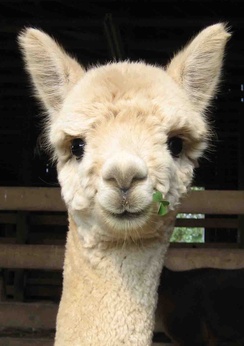Monday, January 14, 2013
Breeding with Purpose

Rational Breeding Decisions:
First of all, thanks to all those who visited the ranch over the holiday break! The weather was great and the babies friendly. If you missed your chance, we still have lots of friendly alpacas that are camera hams. Just let us know ahead of time so we can be sure to have a guide available.
By the time this goes to print, we will have completed the alpaca seminar on February 2-3rd. Three world class alpaca judges agreed to come to our ranch to educate a group of select breeders about techniques to refine breedings and maximize the quality of the offspring. This is now possible due to the creation of an Expected Progeny Differences (EPD) Registry for the alpaca world.
Such EPD’s have existed for cattle, horses, and other livestock for a long time. A cattle breeder, for example, can consult the computer registry looking for a breeding steer that has a history of bringing certain characteristics to offspring such as rate of growth, fat percentage, and even disease resistance. Even “ease of birthing” is measured, which is important for the rancher that can’t always be available for a calf delivery.
Before EPD’s, alpaca breedings had little scientific basis. Observant breeders would try to make educated estimates of how the cria would turn out based on the herdsire’s appearance, his championships, his pedigree, and, when available, how his cria turned out, at least the few she could evaluate. However, just because a guy is handsome doesn’t mean the kids will also be, and this method too often had disappointing results. EPD’s for alpacas are now being developed and are replacing this “best guess” approach by providing more predictable information. Herdsires can now be rated for their ability to produce, in their offspring, characteristics that are important to alpaca breeders and the alpaca products market. These include fleece weight, density, fiber crimp, and fineness, to name a few. Unlike cattle that can be bred by artificial insemination, alpacas require an actual physical breeding. Moving animals can be an expensive proposition most economically done by shipping several females (dams) at one time. Knowing where to send your dams, and which ones to send, requires a working knowledge of the newly developed EPD’s. Progressive alpaca farms are converting their breeding decisions to EPD based choices
That was what our seminar was about. Short of a national meeting sponsored by an alpaca organization, I am unaware of any other farm that has brought these three superb celebrity judges together in one place to provide such an important seminar for local breeders. I supposed that was why we had attendees from as far away as Oregon!